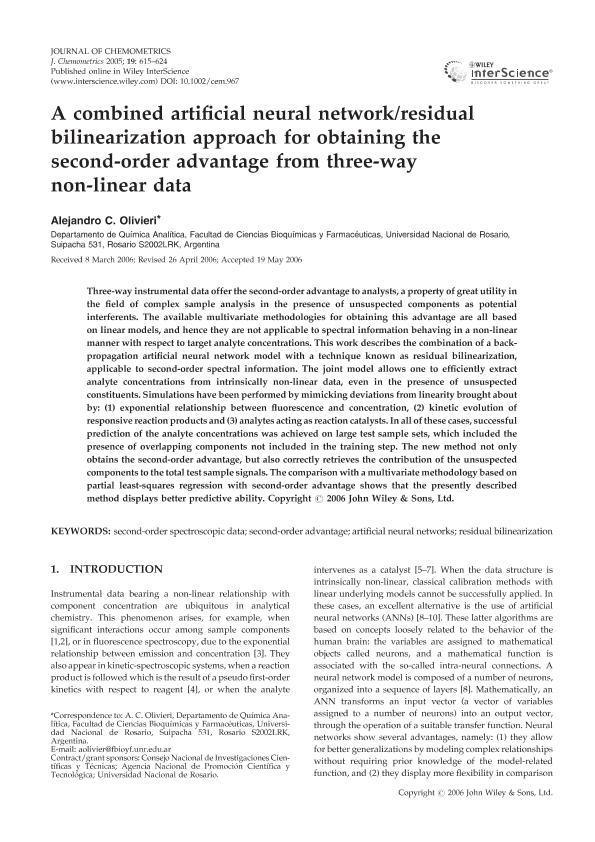Artículo
A combined artificial neural network/residual bilinearization approach for obtaining the second-order advantage from three-way non-linear data
Fecha de publicación:
11/2005
Editorial:
John Wiley & Sons Ltd
Revista:
Journal of Chemometrics
ISSN:
0886-9383
Idioma:
Inglés
Tipo de recurso:
Artículo publicado
Clasificación temática:
Resumen
Three-way instrumental data offer the second-order advantage to analysts, a property of great utility in the field of complex sample analysis in the presence of unsuspected components as potential interferents. The available multivariate methodologies for obtaining this advantage are all based on linear models, and hence they are not applicable to spectral information behaving in a non-linear manner with respect to target analyte concentrations. This work describes the combination of a back-propagation artificial neural network model with a technique known as residual bilinearization, applicable to second-order spectral information. The joint model allows one to efficiently extract analyte concentrations from intrinsically non-linear data, even in the presence of unsuspected constituents. Simulations have been performed by mimicking deviations from linearity brought about by: (1) exponential relationship between fluorescence and concentration, (2) kinetic evolution of responsive reaction products and (3) analytes acting as reaction catalysts. In all of these cases, successful prediction of the analyte concentrations was achieved on large test sample sets, which included the presence of overlapping components not included in the training step. The new method not only obtains the second-order advantage, but also correctly retrieves the contribution of the unsuspected components to the total test sample signals. The comparison with a multivariate methodology based on partial least-squares regression with second-order advantage shows that the presently described method displays better predictive ability.
Archivos asociados
Licencia
Identificadores
Colecciones
Articulos(IQUIR)
Articulos de INST.DE QUIMICA ROSARIO
Articulos de INST.DE QUIMICA ROSARIO
Citación
Olivieri, Alejandro Cesar; A combined artificial neural network/residual bilinearization approach for obtaining the second-order advantage from three-way non-linear data; John Wiley & Sons Ltd; Journal of Chemometrics; 19; 11-12; 11-2005; 615-624
Compartir
Altmétricas




